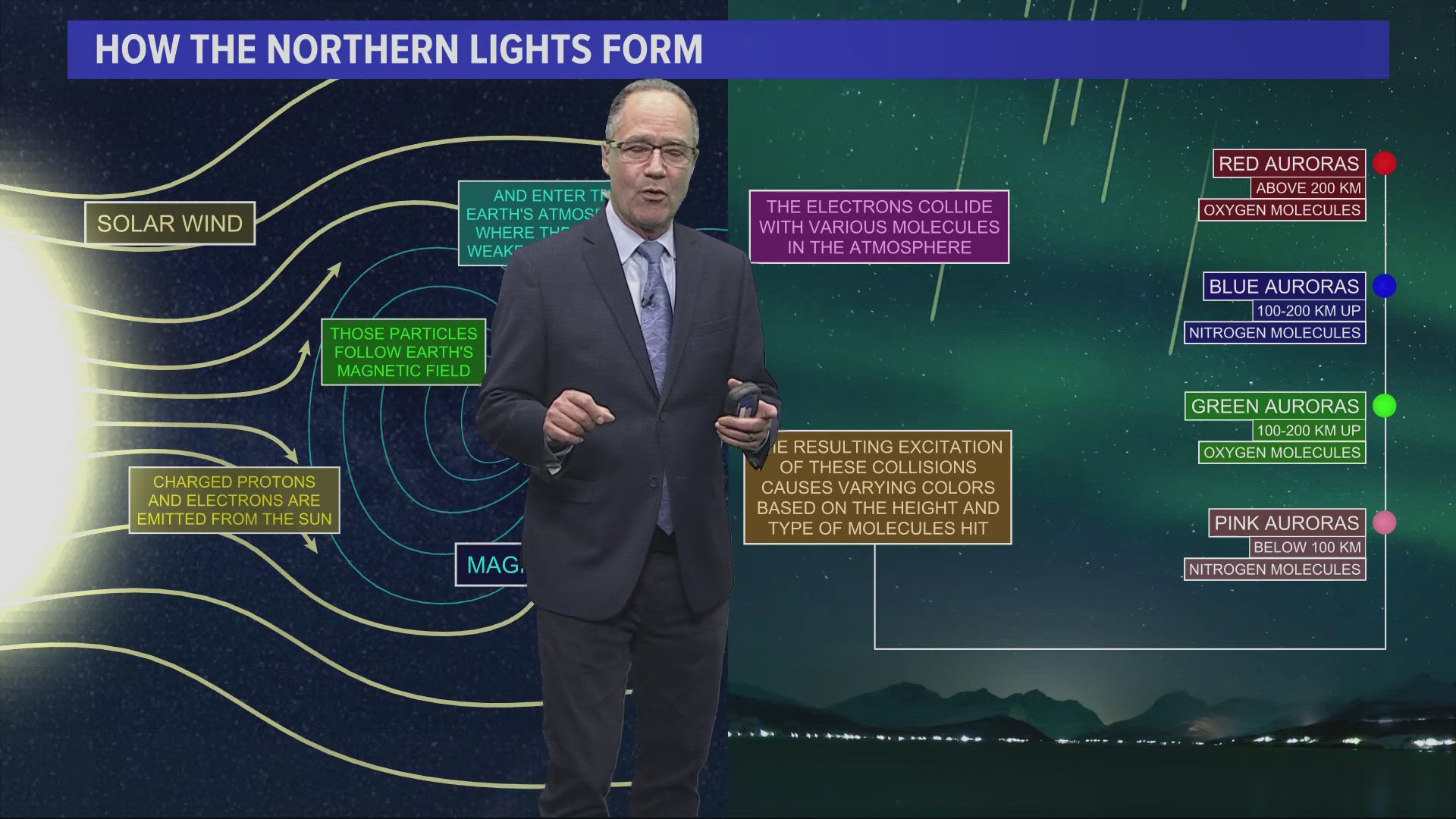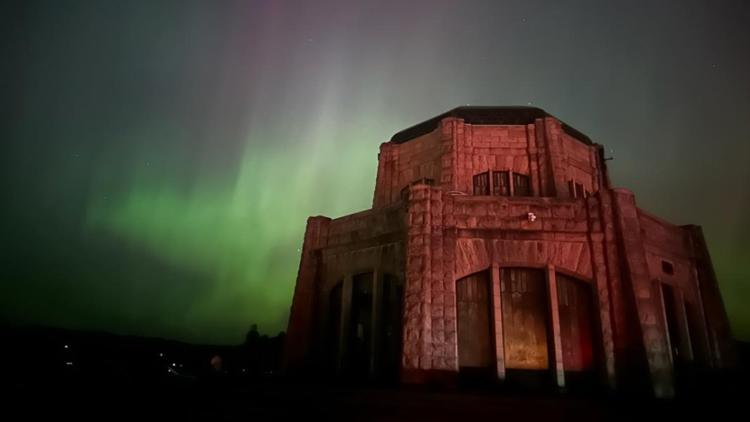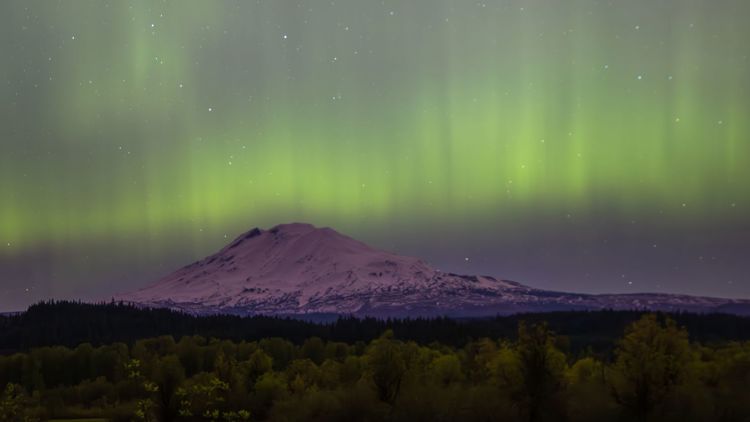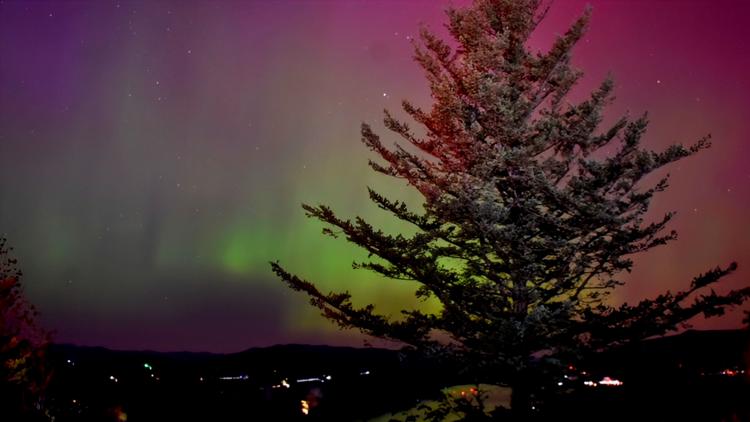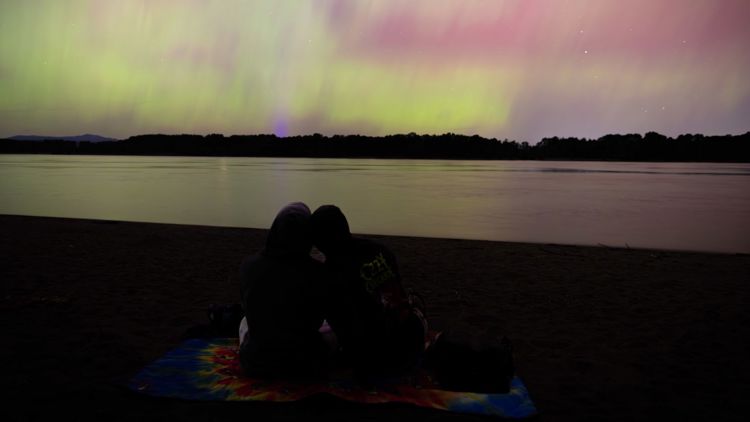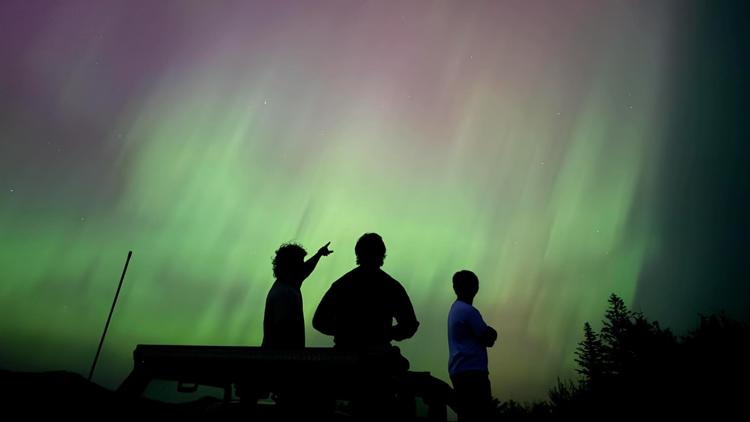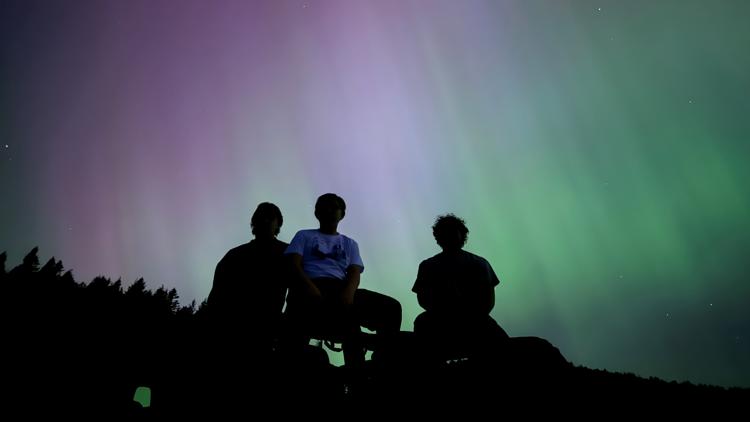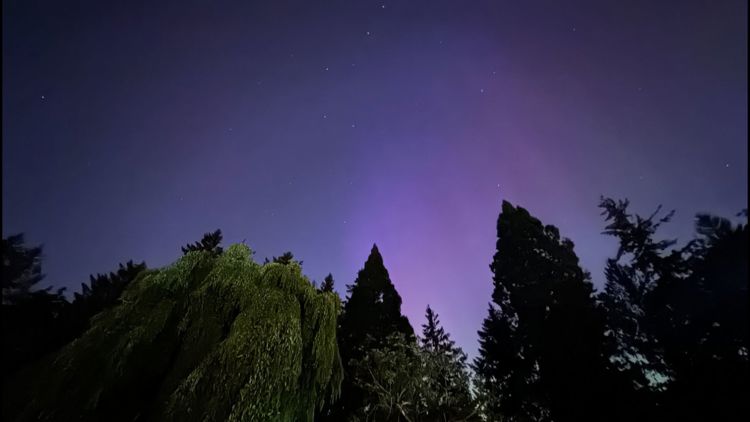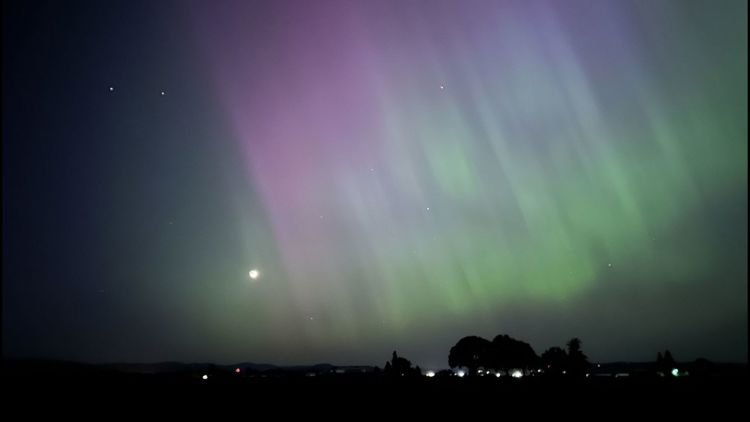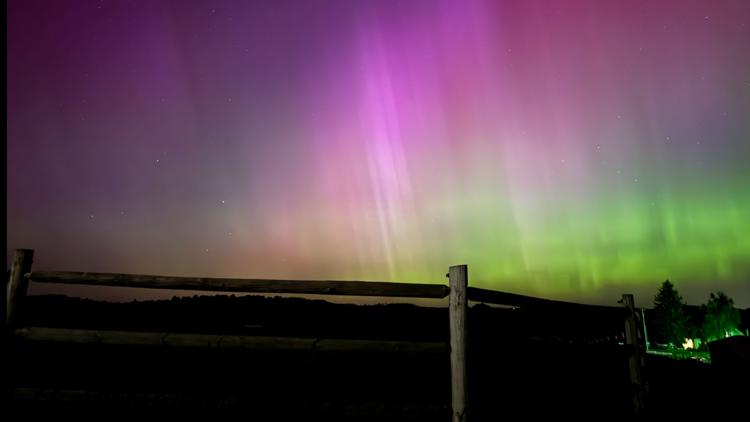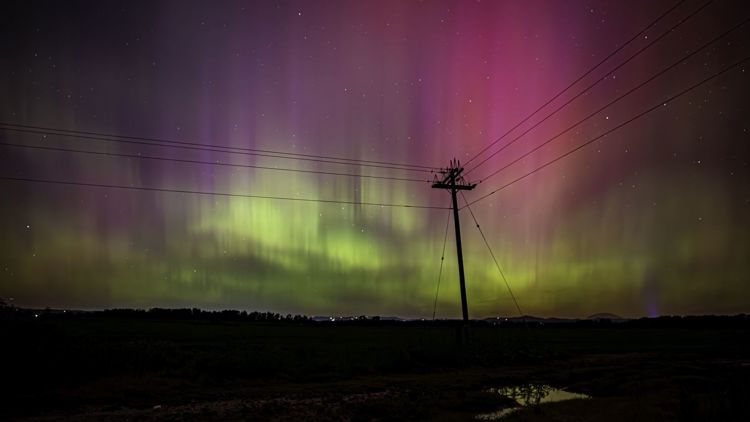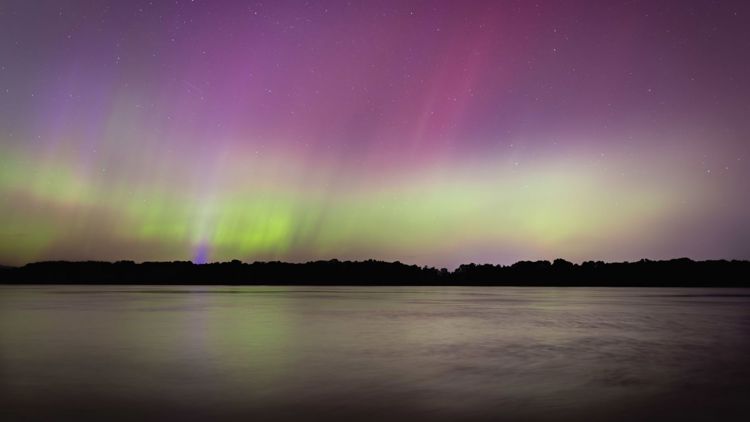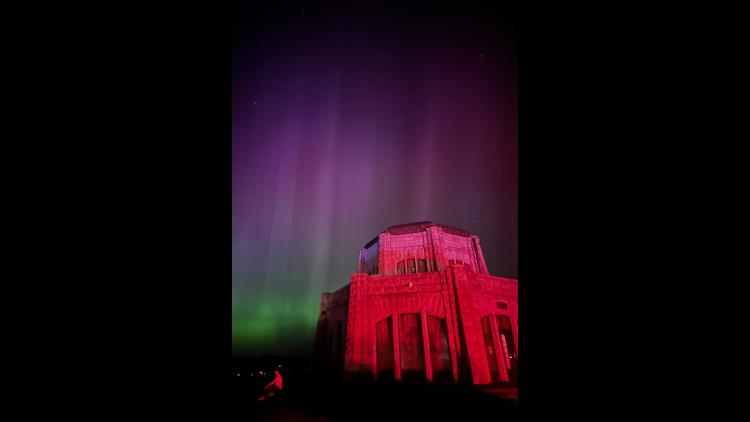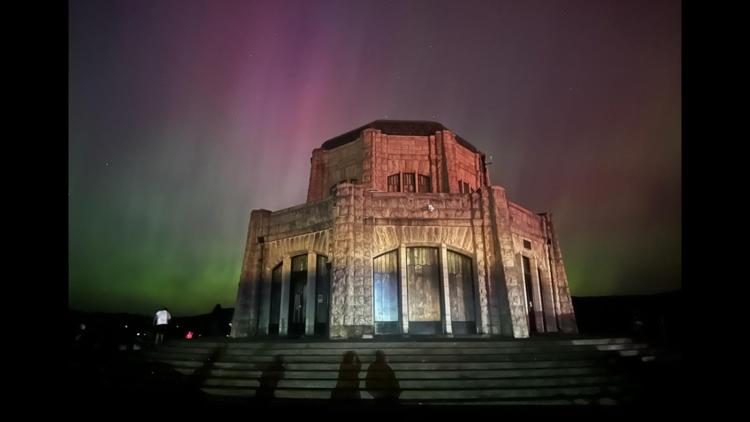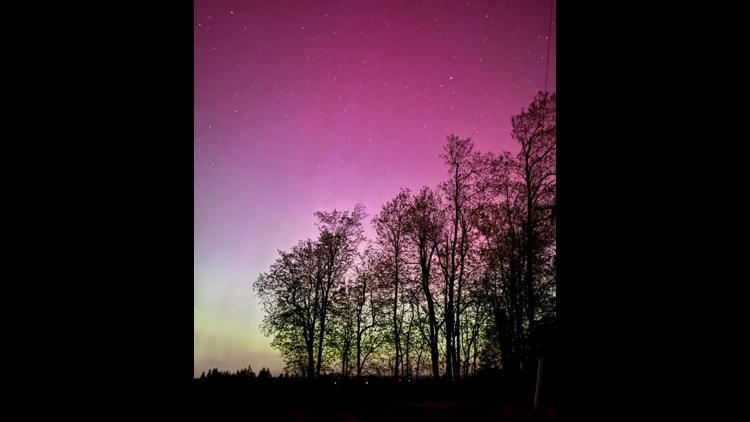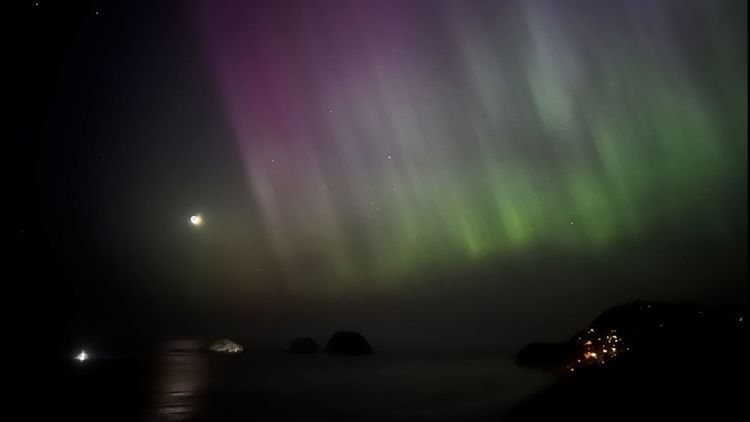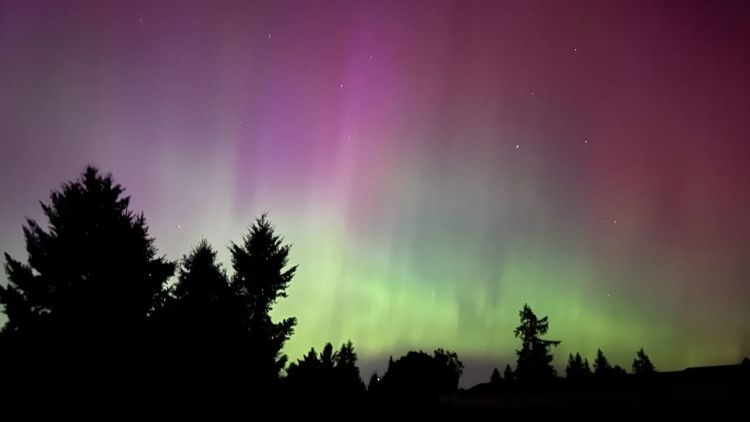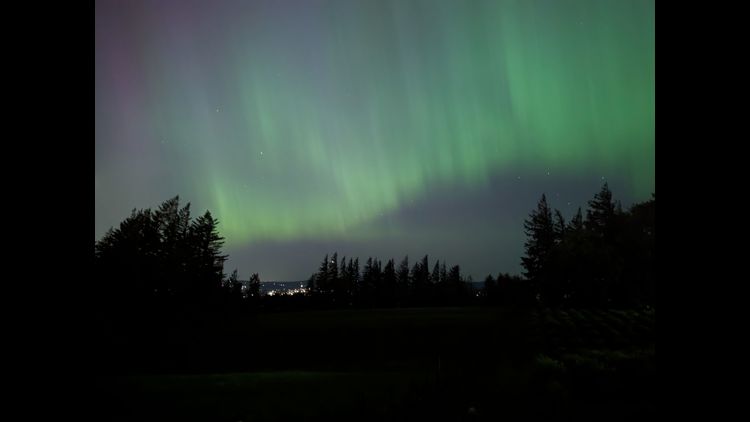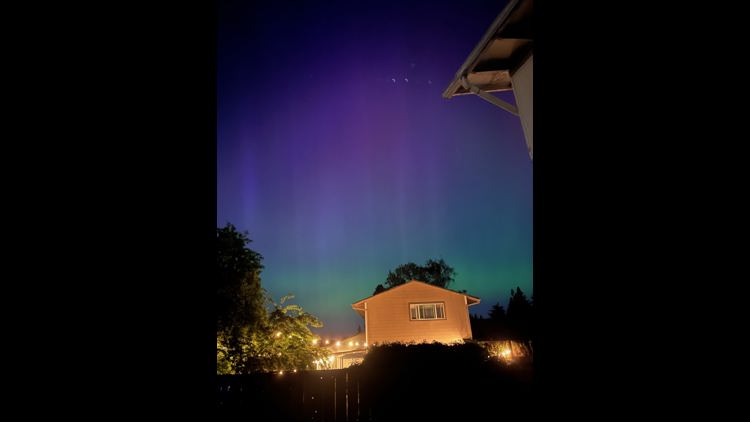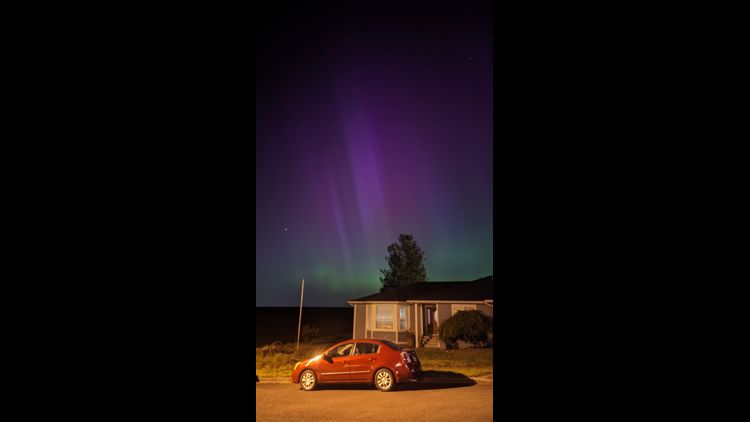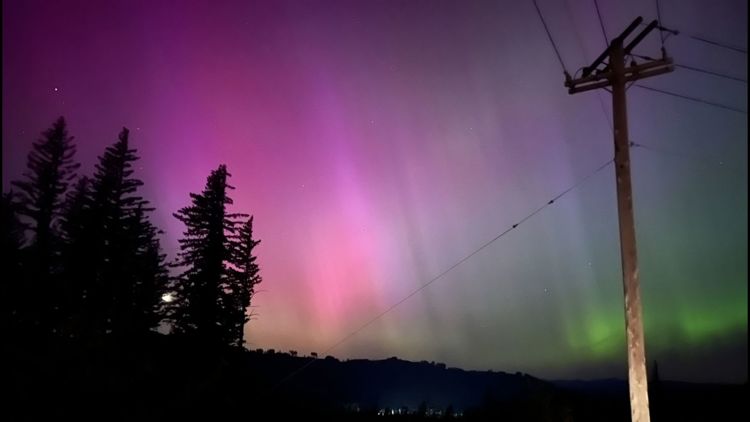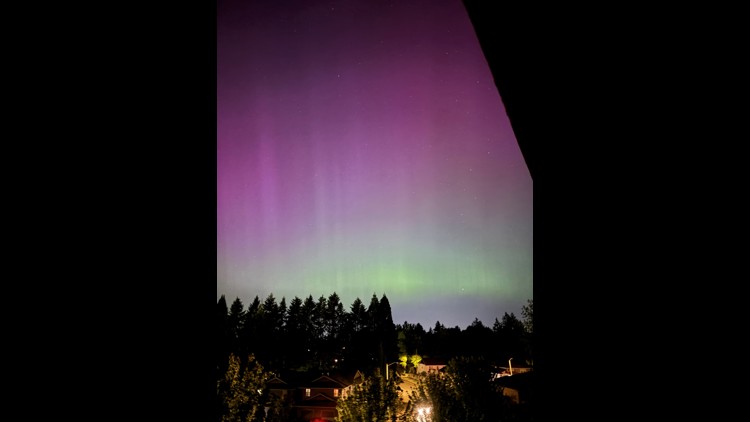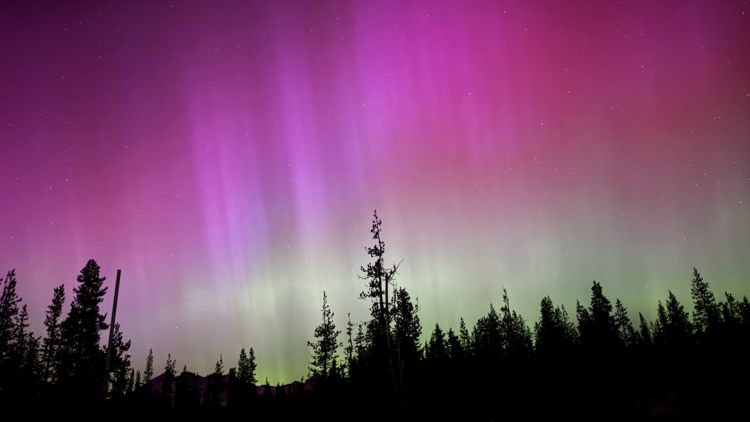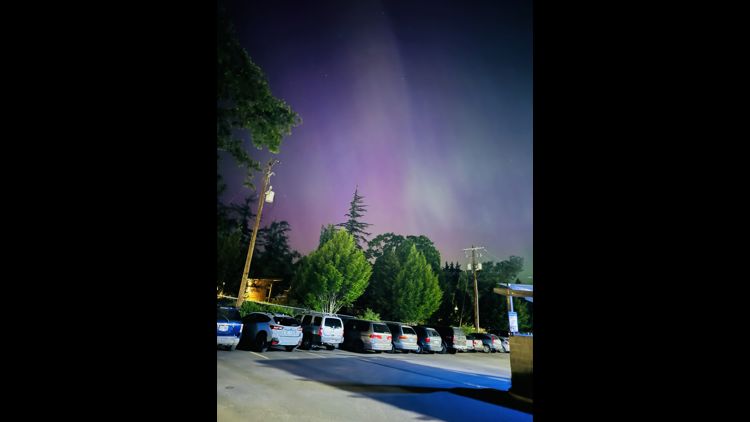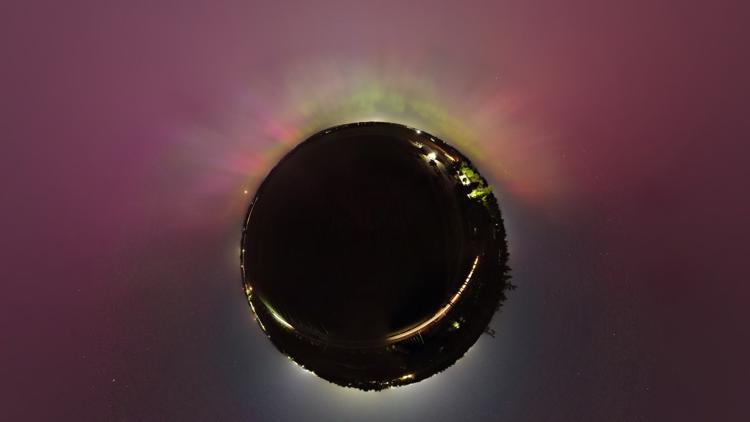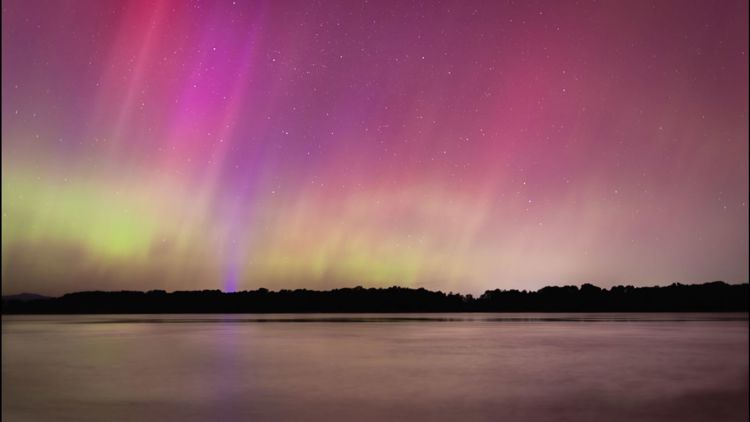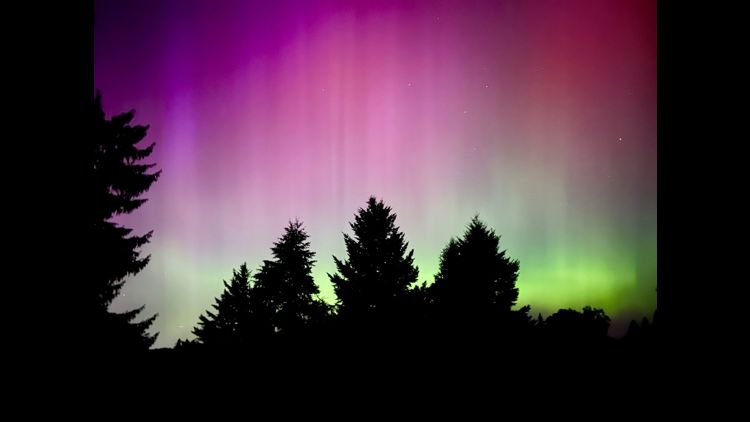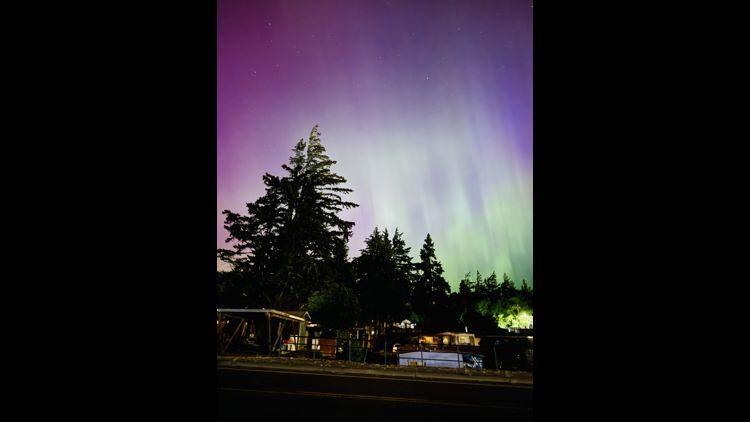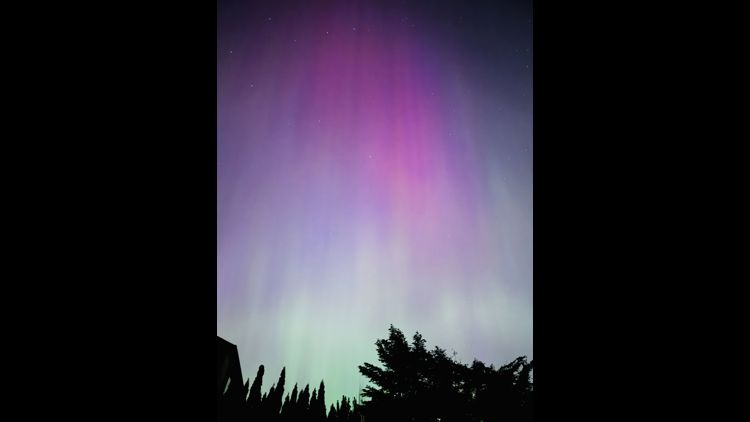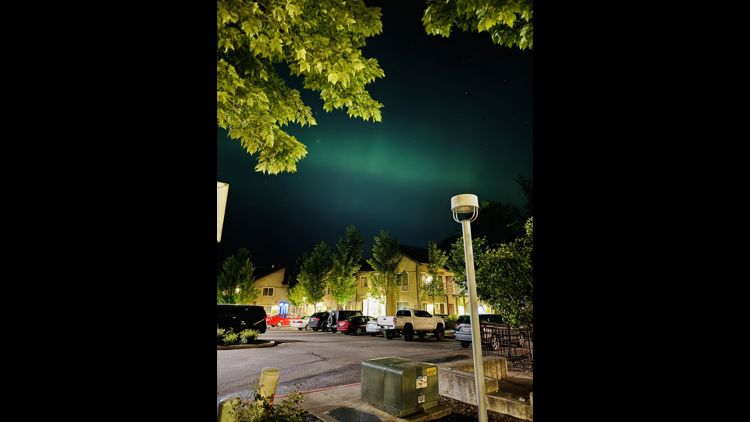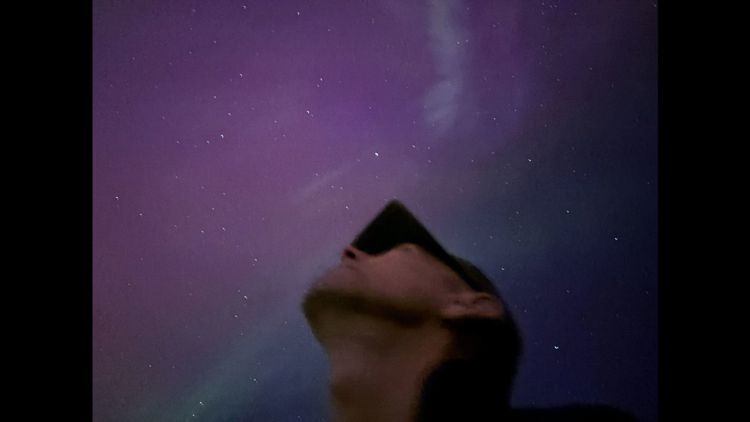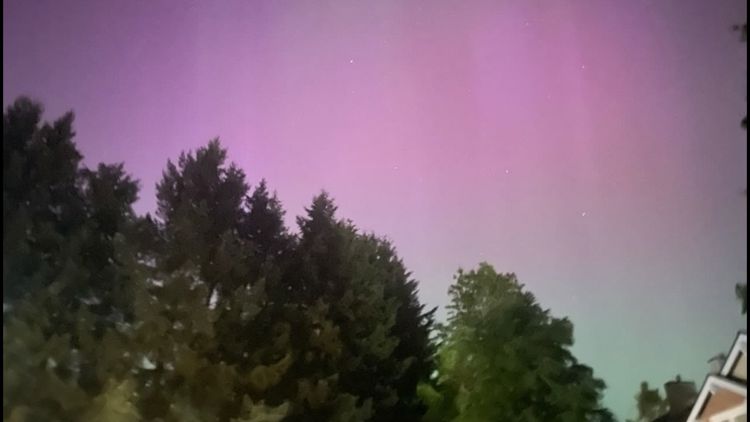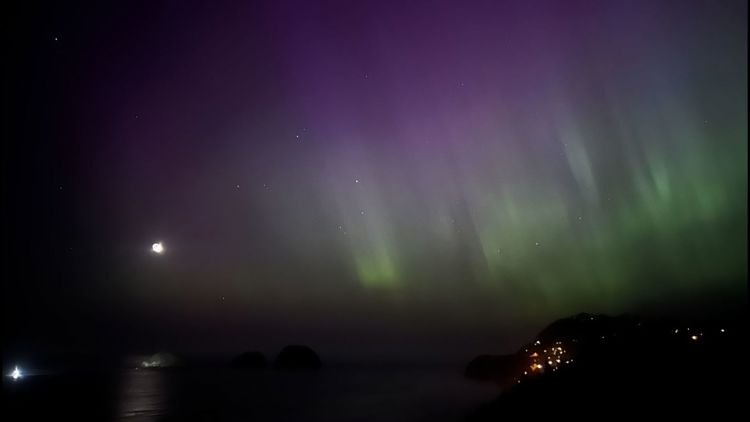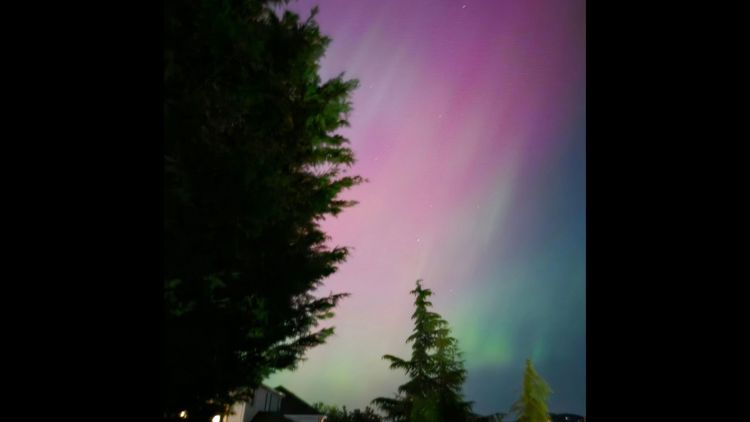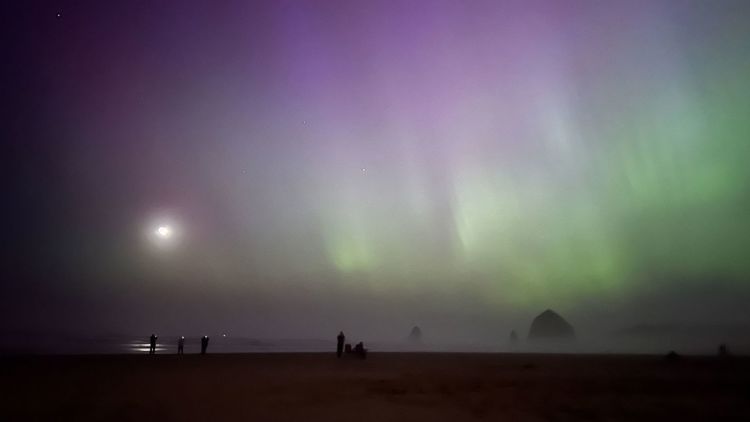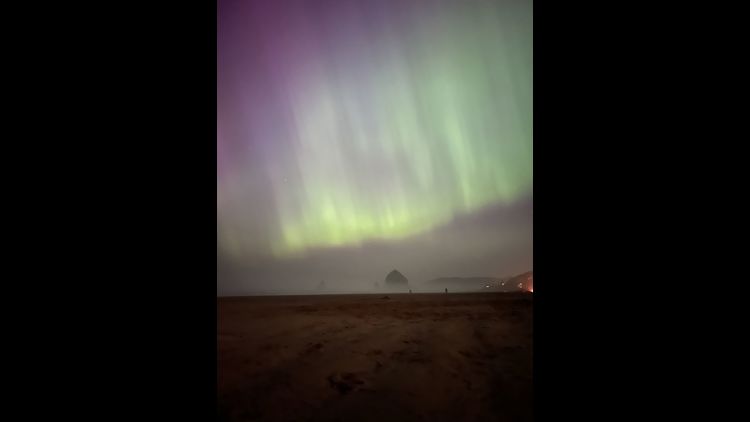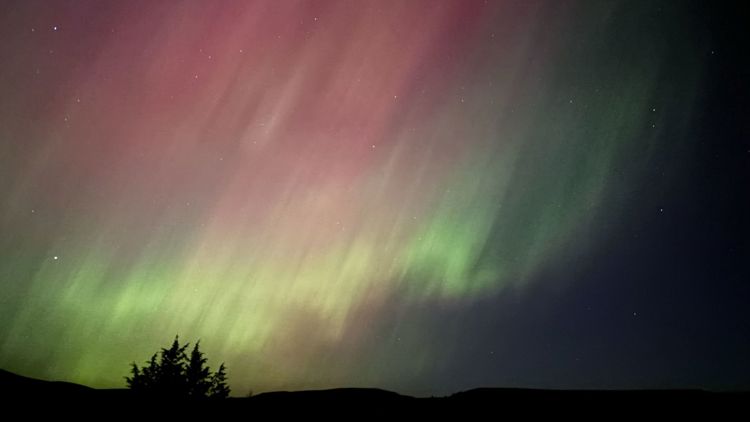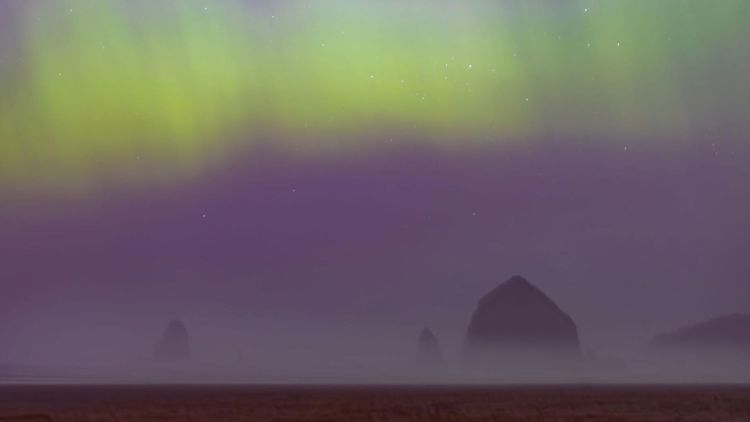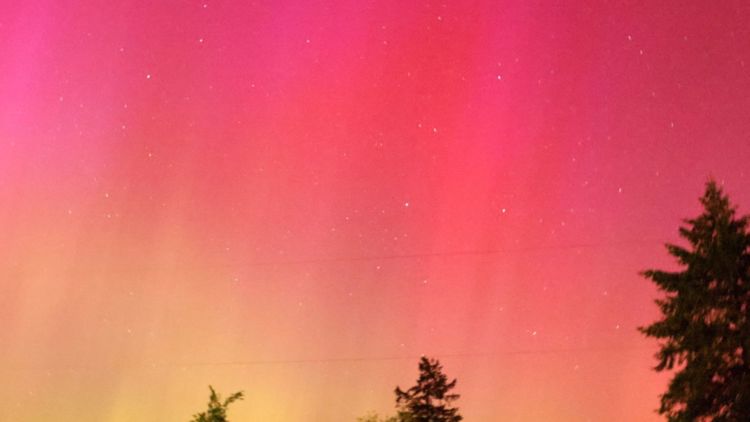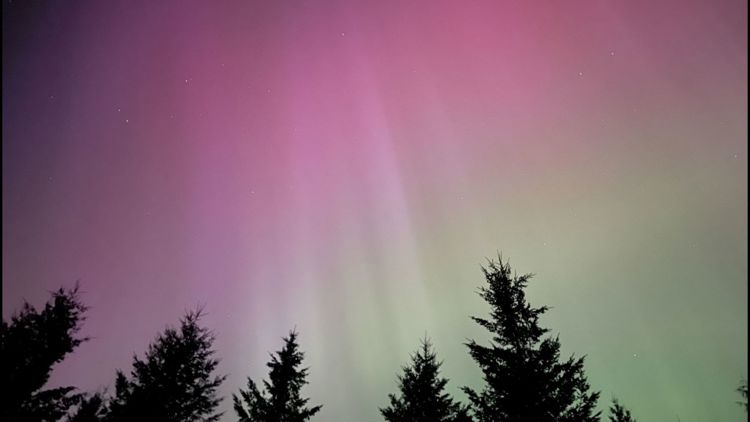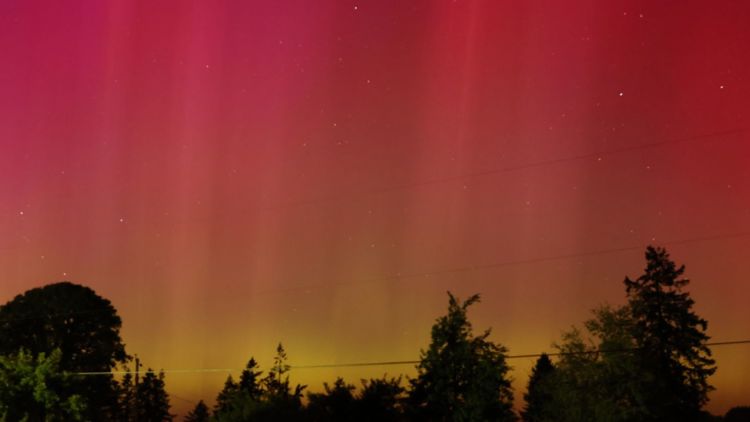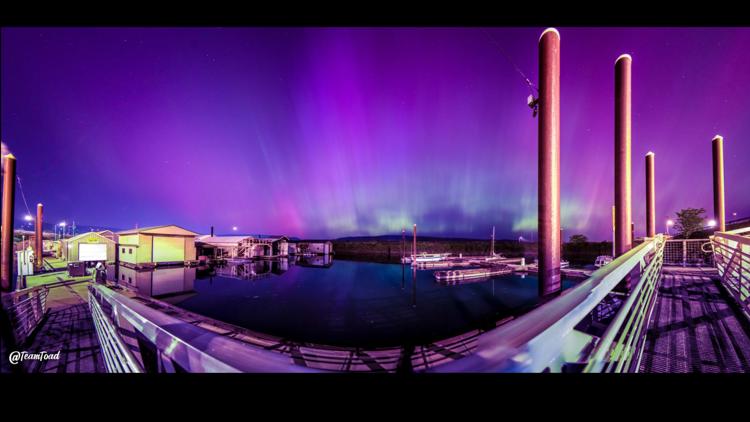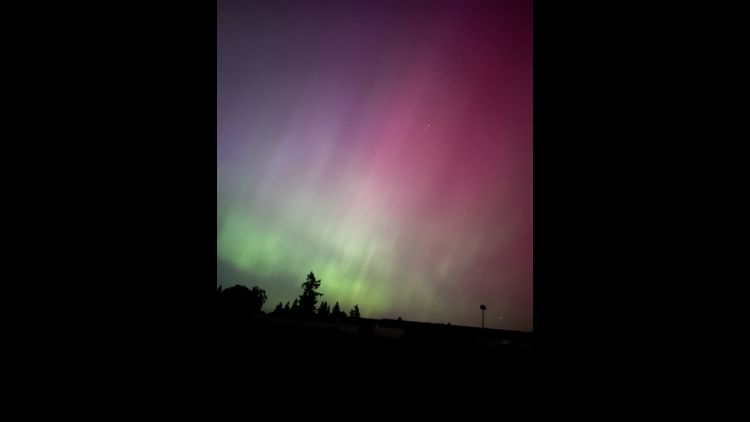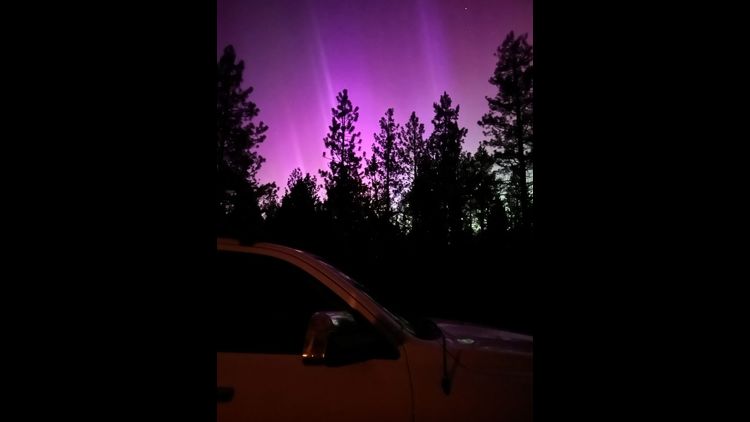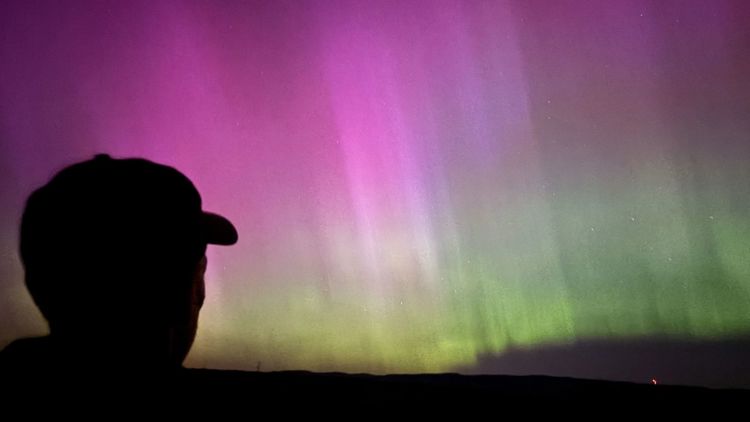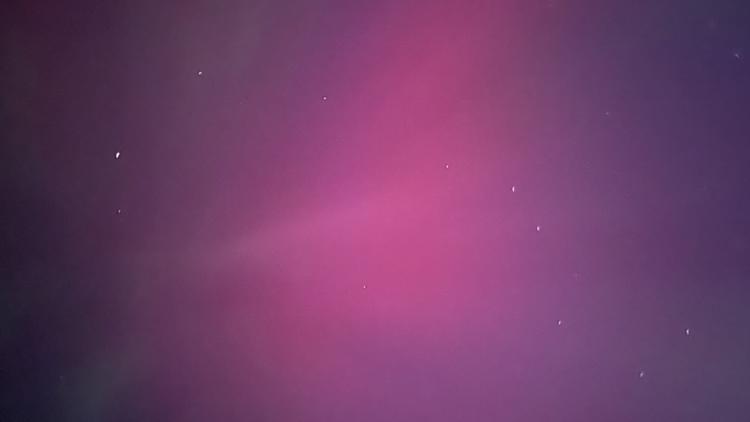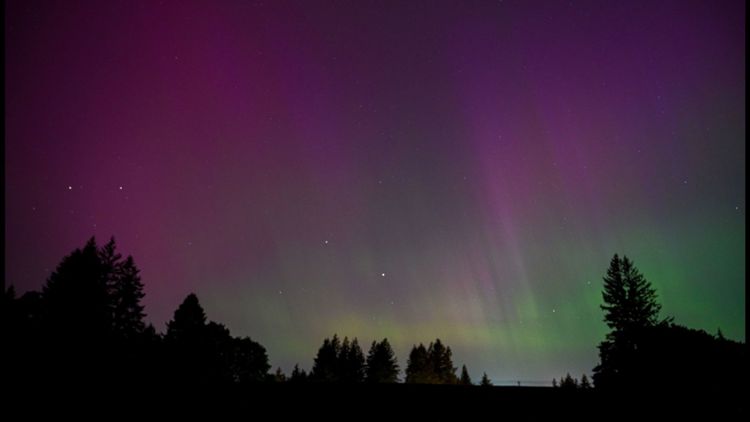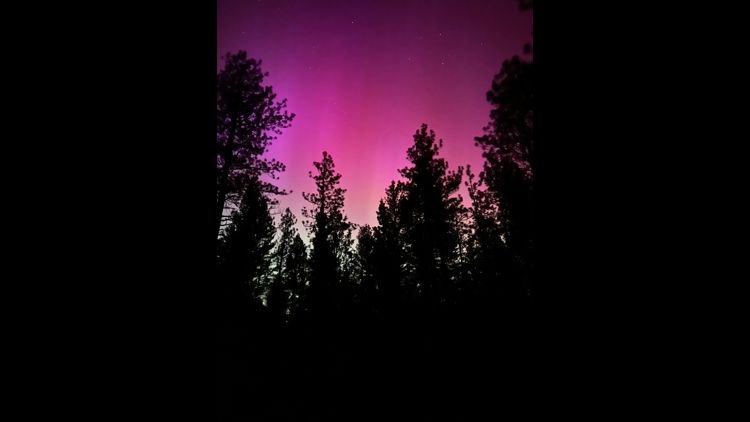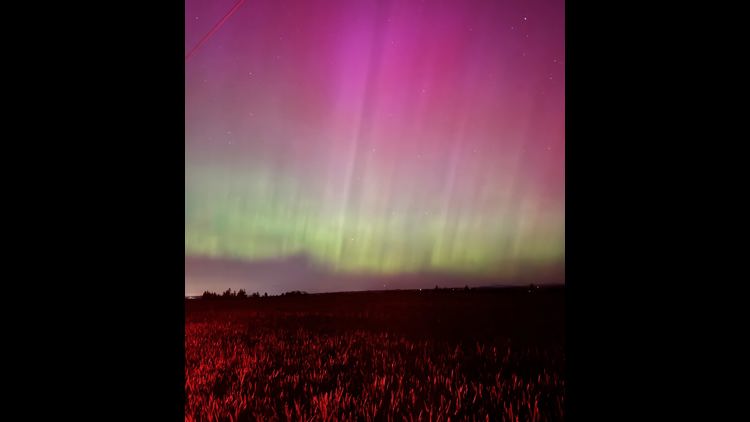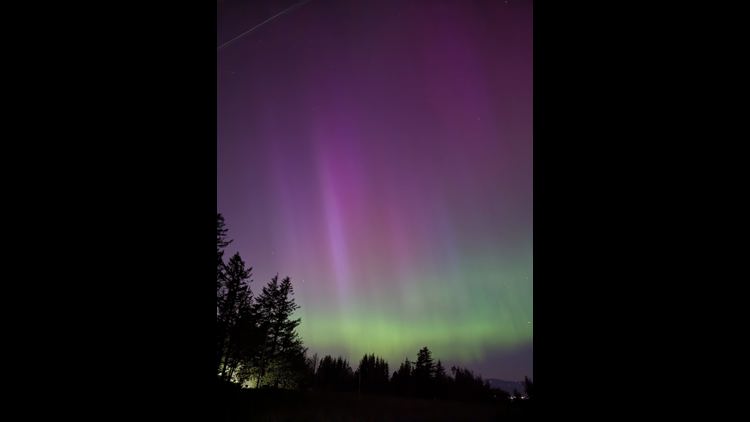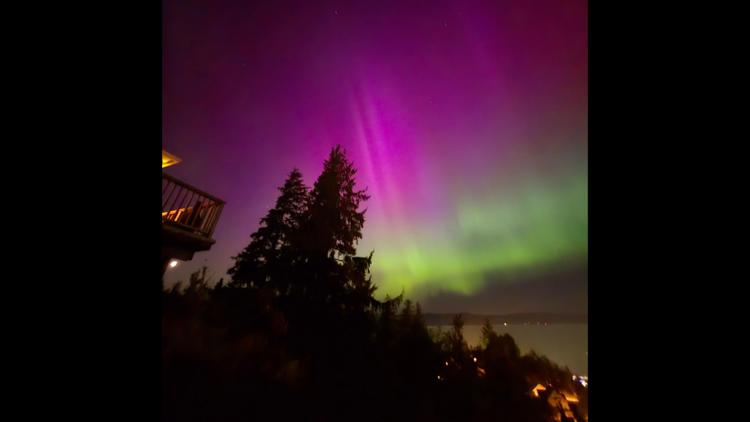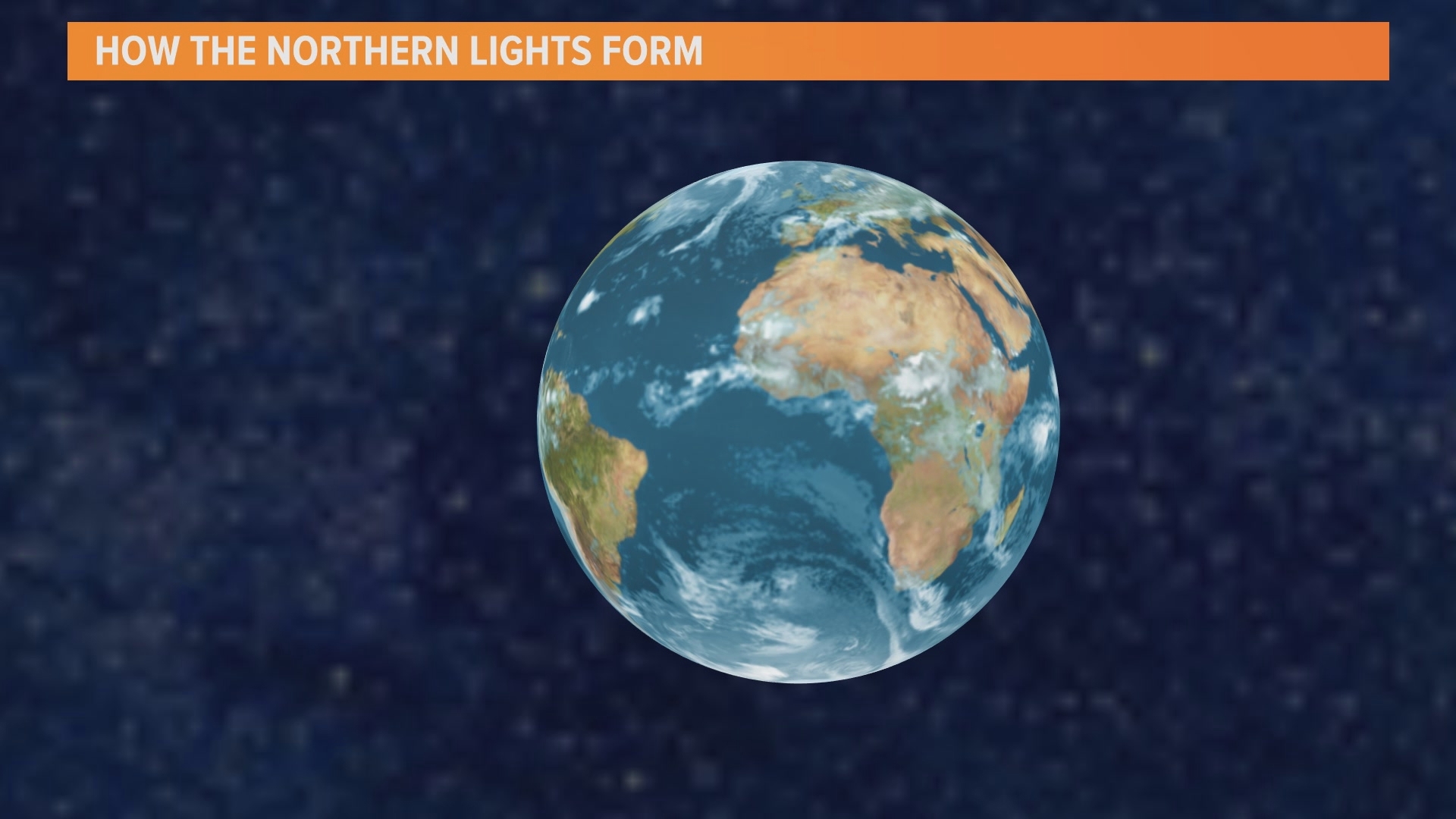PORTLAND, Oregon — A strong solar storm directed towards Earth this weekend means there's a chance the northern lights may be visible in parts of the U.S. — including in Oregon.
The National Oceanic and Atmospheric Administration (NOAA) upgraded a geomagnetic solar storm watch from Level 3 ("moderate") to Level 4 ("severe") on Thursday. NOAA hasn't issued a severe warning since 2005.
The geomagnetic solar storm watch is issued when there is potential activity on the sun's surface that could send waves of high-energy particles toward the Earth. When the particles arrive and interact with the atmosphere, they could generate the northern lights, appearing as a "dancing," faint greenish glow. Sometimes the lights include other colors like pink or red.
PHOTOS: Northern Lights dazzle across Oregon, Washington
When time will the northern lights be visible in Oregon?
The particles are expected to reach Earth Friday night or Saturday morning. People have at least the chance to see the northern lights both Friday night and Saturday night.
The best time to watch is from 11 p.m. to 2 a.m., said Jim Todd with the Oregon Museum of Science and Industry.
"The reason that is that that's the darkest part of the night and that's when the earth's shadow is directly above us so that increases your chance to be able to see something," he said.
The storm could last just a few minutes, or it could be hours.
"Just like you have a rainy night," Todd added. "Sometimes it goes on all night, sometimes it goes off and on. Same thing with the northern lights."
Where will the northern lights be visible? Will they be seen in Oregon?
The northern lights are known for being seen in countries located far north, including Canada and Sweden. But this weekend, the National Weather Service (NWS) said much of the northern U.S. may be in line to see them. They may even be visible in some of the lower Midwest states and in Oregon.
"It takes a good strong storm to be able to see the northern lights, particularly in Portland," Todd said. "We have clear skies for a change. We've had a number of these storms before, but this time we have the perfect clear skies, we have a very small moon. We may be in for a show."
Todd emphasized however that whether we see the northern lights in Oregon may depend on the timing and strength of the geomagnetic storm.
What should I do to see the northern lights?
For the best chance of seeing the northern lights in Oregon, get away from city lights and look to the north.
Todd said a tricky thing about seeing the northern lights is that they're not going to happen overhead, instead they'll be towards the northern horizon.
"When you are watching for (northern lights), you could be looking right at it and not realize it and you're looking at the northern lights," he said. "It could be very faint, it could be just so subtle that human eyes cannot pick up on the colors or the effect of the northern lights."
In terms of best places around Portland to see the lights, Todd said, the most important part is a clear view of the northern horizon, without trees or buildings blocking it.
How do the northern lights form?
The Earth has a magnetic field which is weakest at the north and south poles. When there is a geomagnetic storm, there is an extra amount of charged protons and electrons from the sun that are directed towards Earth, KGW Chief Meteorologist Matt Zaffino said. Those charged protons and electrons feed into the weakest part of the magnetic field and get "excited" when they hit the molecules in the Earth's atmosphere.
"When they collide with certain molecules in the atmosphere, those molecules start vibrating more and they produce color," Zaffino said.
Click on the video below to watch a short animation showing how the northern lights form.
Since Wednesday, the sun has produced strong solar flares that have resulted in at least seven plasma outbursts, according to NOAA. Each eruption is known as a coronal mass ejection, and they can contain billions of tons of plasma from the sun's outer atmosphere, or corona.
When waves of these high-energy particles hit the Earth, they have the potential to disrupt satellite communication systems and power grids on the planet. NOAA alerted power plant operators and spacecraft in orbit to take precautions, but the agency's Space Weather Prediction Center said most people on Earth won't have to do anything.



